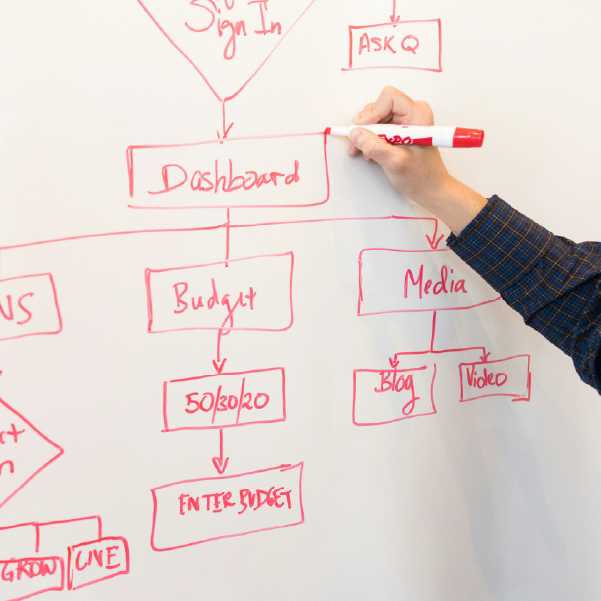
JD Edwards Enterprise Automation Advances With Connected Procure To Pay Process Model
The latest enhancement to the JD Edwards Enterprise Automation framework delivers another leap forward for procurement teams with the introduction of the Procure to Pay Process Model with Connected Processes.
Oracle JD Edwards continues to meet the challenges of increasingly complex business landscapes with each new release – driving enterprise agility, accountability, and automation. This latest update transforms how businesses manage and analyse the procure-to-pay (P2P) lifecycle by linking the requisition and purchase order processes into a single, visualised, and trackable workflow.
This enhancement enables teams to identify bottlenecks, improve cycle times, and align procurement actions with strategic goals.
The JD Edwards Enterprise Automation Vision
At the core of JD Edwards Enterprise Automation is the understanding that your business is more than a series of tasks, it’s a network of interconnected processes. By making these relationships visible and navigable, JD Edwards empowers organisations to shift from reactive problem-solving to proactive process improvement.
The new Procure to Pay Process Model is a real-world application of this vision. It provides a connected, drillable model where stakeholders can view the end-to-end journey—from requisition creation through to purchase order issuance—and understand how each step impacts the next.
Key Features of the Connected P2P Model
- Visual Process Connectivity: Requisitions and purchase orders are now linked within the Enterprise Automation framework, allowing users to navigate between them and view upstream and downstream relationships.
- Bottleneck Identification: With full visibility into the connected process model, users can spot delays and inefficiencies—for example, excessive approval wait times or delays in purchase order generation.
- Drill-Down Navigation: Users can click through from the requisition process directly into the purchase order process, enabling faster resolution of issues and improved stakeholder communication.
- Unified Process Intelligence: By connecting processes, JD Edwards lays the groundwork for embedded insights and analytics across the procurement lifecycle.
JD Edwards Release 25 (Applications Enhancements – Dec + Apr + Jun 2025)
In this webinar, Anne Thiele demonstrates the latest Apps enhancements in Release 25. Designed for both End Users and Decision Makers, Anne keeps the session easy to understand and brief!
How JD Edwards Delivers Real-World Value for Procurement Teams
Traditional ERP systems often isolate procurement tasks into silos—requisitions in one system, approvals in another, purchase orders managed elsewhere. This creates visibility gaps that slow down operations and increase the risk of errors.
With JD Edwards’ connected Procure to Pay Process Model, procurement professionals’ benefit from:
- Streamlined operations: Faster cycle times and reduced manual handoffs.
- Better decision-making: Data-driven insights into where delays are occurring and why.
- Greater accountability: Transparency into process ownership and execution status.
- Improved supplier collaboration: Faster issue resolution improves supplier relationships and trust.
An Evolution of the JD Edwards User Experience
This enhancement builds on Oracle’s broader vision of JD Edwards as an intelligent automation platform. In recent releases, JD Edwards has introduced:
- Orchestrator enhancements for low-code automation
- Watchlists and notifications for real-time process monitoring
- Process Recorder and Automation Studio for modelling and optimising workflows
- AI-ready infrastructure to support predictive analytics and embedded intelligence
Together, these features make JD Edwards not just a system of record, but a system of action—actively helping users improve their processes in real time.
Connected Procure to Pay Model Brings Value to a Wide Range of Industries
While the connected procure to pay model offers broad value, it’s especially relevant to:
- Manufacturers and Distributors managing complex procurement pipelines
- Engineering & Construction firms with project-based purchasing
- Public sector organizations needing clear audit trails and approval hierarchies
- Retailers with fast-moving purchasing cycles and dynamic supplier networks
In each of these industries, having an accurate, visual, and connected understanding of procurement operations is critical for managing costs, compliance, and efficiency.
How Ndevr Can Help You Leverage JD Edwards Automation
At Ndevr, we help organisations across Australia and New Zealand modernise their JD Edwards environments—focusing on automation, operational control, and digital transformation. Whether you’re aiming to reduce procurement delays, eliminate manual approvals, or design orchestrated workflows, we have the practical experience to guide your journey.
Our team can assist you with:
- Mapping your current procurement processes into the new connected model
- Identifying automation opportunities using Orchestrator and Process Recorder
- Training your teams on how to leverage process visibility for better results
- Configuring alerts, watchlists, and KPIs tied to procurement SLAs
Start Automating with Confidence
JD Edwards continues to evolve into a platform built for automation, agility, and business process intelligence. With the Procure to Pay Process Model with Connected Processes, procurement teams now have the tools to eliminate blind spots and run smarter, more streamlined operations.
Interested in implementing or optimising JD Edwards Enterprise Automation for Procure to Pay?
Contact Ndevr today and let’s talk about your automation goals—and how we can help you get there faster.


